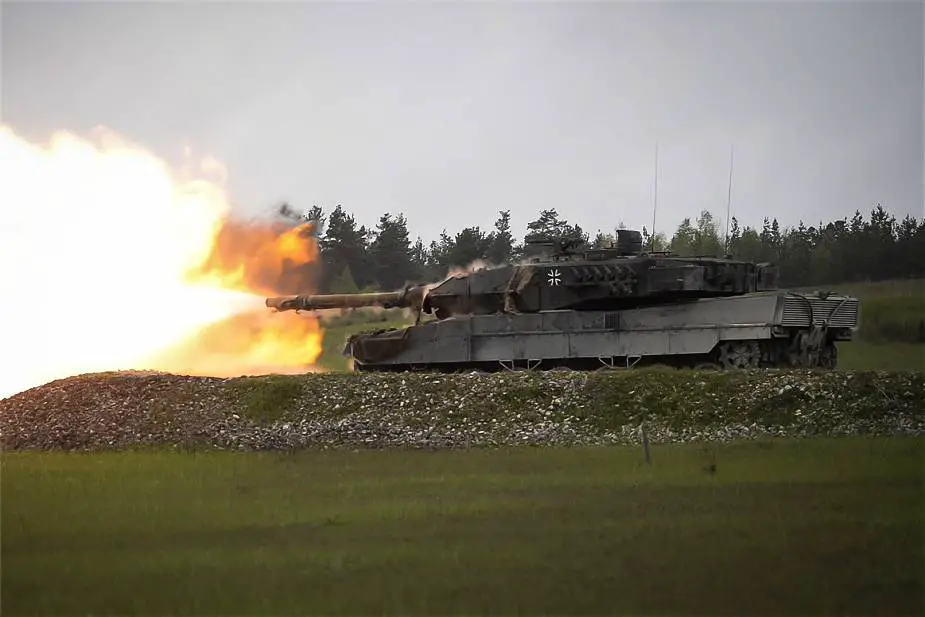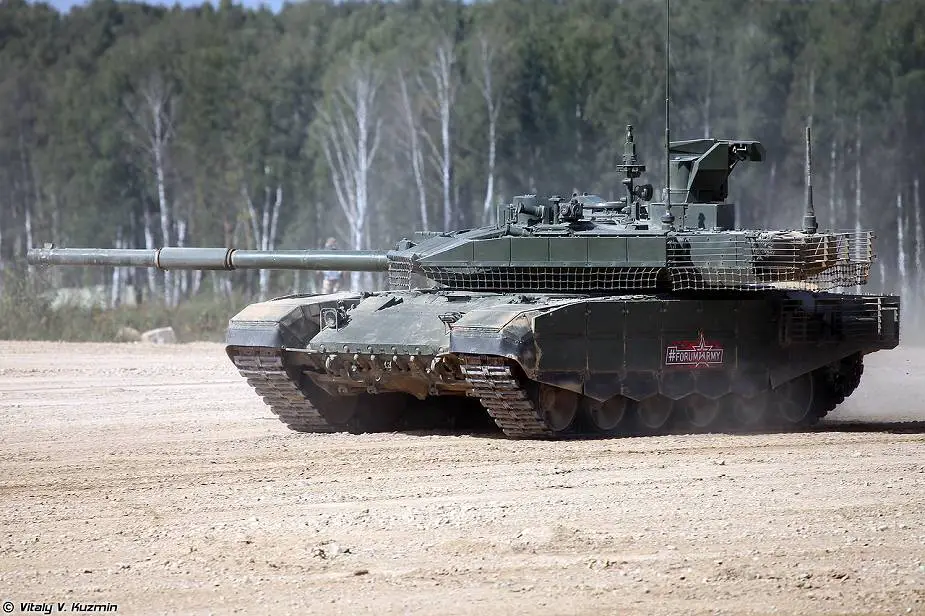- Army
- Conflicts in the world
- Israel - Iran conflict 2025
- Pakistan - India Conflict 2025
- Russia Ukraine War 2022
- Libya conflict day by day
- HAMAS - Israel War 2023
- Operation Serval in Mali French Army
- Sangaris operation Central African Republic
- Sangaris opération militaire République Centreafrique
- Ukraine - Russia conflict
- Syria conflict news
- Defence & Security Industry Technology
- Armies in the world
- Analysis Defense and Security Industry
- Conflicts in the world
- Navy
- Air
Will Leopard 2 tanks do a breakthrough in Ukraine?
The ongoing Russian-Ukrainian conflict has rarely seen tank-against-tank combat, at least combats resembling Cambrai 1917, El Alamein 1942, or Prokhorovka (Kursk) 1943. Nevertheless, the recently announced European and Canadian handing-overs of German-made Leopard 2-family main battle tanks (MBTs) to Ukraine and reported deliveries of the newest T-90M Proryv (Breakthrough) MBTs to the Russian military may turn the tide. The military-technical portal "Status-Arms" was informed about this in the Ministry of Defense of the Russian Federation. (External contribution Anthony Bell)
Follow Army Recognition on Google News at this link

A German Leopard 2A6 tank fires at its target during the Strong Europe Tank Challenge (SETC), at the 7th Army Training Command's Grafenwoehr Training Area, Germany, May 12, 2017. (Picture source U.S. DoD )
As of early March 2023, six European countries announced their plans to deliver Leopard 2-family MBTs to Ukraine and confirmed them. Germany is set to supply 14 Leopard 2A6s, while Poland will deliver 14 Leopard 2A4 tanks. Norway reported the proposed delivery of 8 Leopard 2A4s; Spain is also set to donate baseline Leopard 2A4 MBTs, namely 6 vehicles. Canada has already sent its 4 Leopard 2A4CAN tanks and promised to send 4 more. Portugal has recently confirmed its firm intention to supply Ukraine with 3 Leopard 2A6PO tanks. Therefore, Kyiv is set to receive more than 50 Leopard 2-family tanks; these deliveries may be followed by dispatches of more Leopard 2s to Ukraine by both aforementioned countries and fresh NATO member states pending the confirmation of their requests to join the alliance, in particular, Sweden and Norway. Stockholm and Helsinki have Leopard 2A4/2A6 and Strv 122A (an incrementally modified Leopard 2A5) / Strv 122B (a deeper modernization of Leopard 2A5) tanks, respectively.
It is noteworthy that Leopard 2A6 is the latest variant of the Leopard 2 family to be handed over to Ukraine. Having a combat weight of some 62.3 t, the vehicle carries a powerful Rheinmetall 120 L/55 120 mm smoothbore tank gun and is protected with improved Non-Explosive Reactive Armor (NERA) suite, which allows the tank to withstand several hits of both kinetic energy (KE) and chemically formed (CE) projectiles.
Between the end of the Cold War in late 1991 and the commencement of the Russian-Ukrainian conflict in February 2022, Leopard 2-family MBT rarely saw any operational use. In 2007-2011, Canada dispatched several dozen Leopard 2A6M CAN MBTs (an upgraded variant of German Leopard 2A6M with improved lower hull protection and a more sophisticated electronics suite) to Afghanistan; the country was followed by Denmark and Germany. The results of the tanks' operational use in the environment of Afghanistan are available only partially; the MBTs are known to have been protecting forward operating bases and providing limited fire support using 120 mm high-explosive fragmentation rounds (including air burst munitions).
It should be mentioned that the anti-tank threat to the vehicles in this theatre of operations was rather low; the opposing side was armed with outdated Cold War-era anti-tank weapons, including RPG-7-family rocket launchers with single-charge rocket-propelled grenades; MILAN and 9M14 Malyutka (NATO reporting name: AT-3 Sagger) anti-tank guided missile systems (ATGMs), and improvised explosive devices. None of these weapon systems posed a real threat to well-protected variants of Leopard 2 deployed by the NATO countries. Moreover, the opposing side's anti-tank defense was rather fragmentary and lacked both organization and layers in its structure.
Turkey rather intensively used its incrementally upgraded Leopard 2A4 tanks during the country's operations near Syrian borders and against Kurdish groupings in 2016-2018. According to the photos published during the conflict, no less than 8 MBTs were completely destroyed by the Soviet-age 9K111 Fagot (AT-4 Spigot) and early 9K111-1 Konkurs (AT-5 Spandrel) ATGM systems. At the same time, the Turkish Leopard 2A4s were a valuable source of firepower due to high lethal effect of its rounds.

Russian T-90M MBT Main Battle Tank. (Picture source Vitaly Kuzmin)
Ukraine seems to be a new type of battlefield: it turns out to be a high-intensity (high-in) conflict, with its nature and scales sometimes resembling those of the two world wars in Europe. The operational environment there is over-saturated with both KE and CE man-portable and self-propelled anti-tank projectiles, which were previously designed for a (luckily, never-come-to-live) large conflict in Europe in the late 1980s. Considering these facts, no one could describe the Leopard as the ultimate weapon – a kind of Wunderwaffe, which will inevitably turn the operational balance in favor of the Ukrainian side.
Moreover, the Russian military operates newly built – not deeply or incrementally modernized variants of the Cold War-era Soviet-designed armored platforms – MBTs, which feature rather high combat potential. According to the press department of the Russian Ministry of Defense (MoD) some units rather intensively employ new T-90M Proryvtanks to accomplish a wide range of combat missions. The MoD has published a number of footages, which speak for the land platform's high capabilities in terms of engaging armor, covered anti-tank systems, positions of mortar batteries, and manpower. Compared with previously designed variants of the T-90 MBT, the T-90M Proryv has received a new turret, a 'new-generation' explosive reactive armor (ERA) suite, modern communications systems, and a more powerful powerpack. The press department also reported that the T-90Ms are being operated along with tactical unmanned aerial vehicles (UAVs), which detect the opposing side's positions and adjust the fire of tank guns.
Despite the fact that the MoD discloses neither type of the ERA suite nor the specifications of the MBT, one could definitely state that, if the aforementioned deliveries take place, the Leopard 2s will see a capable opponent: the T-90M Proryv. Operational use is the uttermost criterion of estimation and analysis, so it may reveal the strong and weak points of each platform in the field.
Anthony Bell
Defense News March 2023


























